Binoculars vs Telescopes: Learn When and Which One to Use
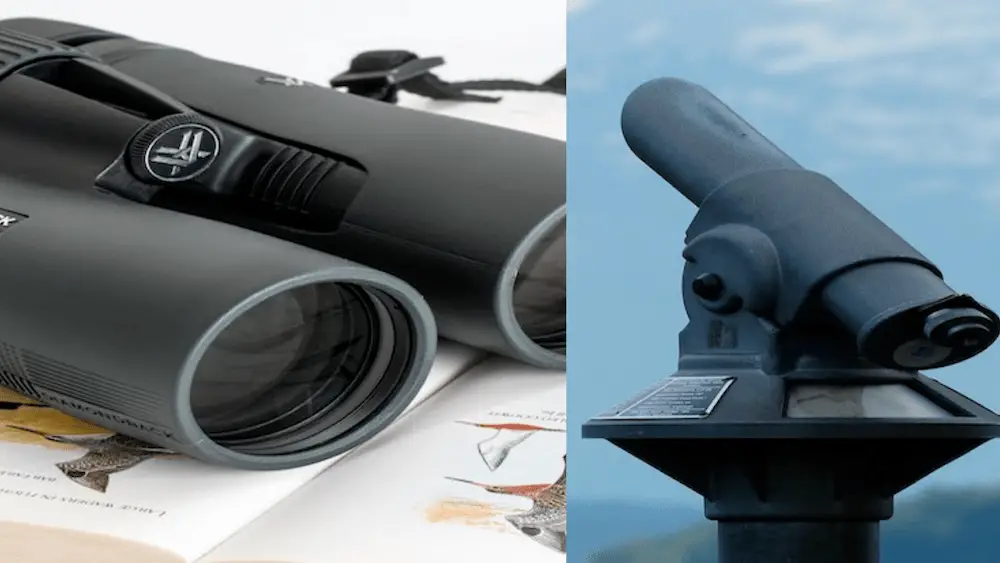
Our eyesight has limits on how far we can see. Telescopes and Binoculars are optical instruments that help us to see clearly and understand the features of far away objects.
These could be far away planets or stars or birds and animals a wildlife park or forest. We get to feel that these are nearer and bigger. Here we compare binoculars vs telescopes and suggest you which one to use according to your purpose.
Telescopes have only one viewfinder and we use one eye to see through them. However, in binoculars, there are two viewfinders.
So we can use both our eyes to see through them. This gives a 3-Dimensional (3D) image which is the natural way we see things around us.
Major Differences Between Binoculars And Telescopes
Structure:
A telescope is an arrangement of lenses, or of curved mirrors and lenses. It collects rays of light from a far away object helping us to see an enlarged image.
It has only one viewfinder whereas the binocular has two eyepieces. When we view through the binocular using both our eyes we get a better view (3D view).
The telescope generally has a bigger objective (lens) than the binocular. This helps us to see fairly well even in dim light.
Uses:
The telescope is the main instrument used since ages in astronomy.
Professional astronomers and people who have astronomy as a hobby has used telescopes to see stars, planets and other heavenly objects.
On the other hand, binoculars are used by people of all kinds to watch birds and wild animals in sanctuaries, and for security surveillance. It is also very commonly used by tourists.
Technical features/specifications:
Telescopes help us view heavenly objects that are very far way while binoculars help us see things that are relatively nearer.
The lens of the telescope is of a single view and the zoom ranges from 15 xs to even 60x.
In binoculars, the lens is of dual type and zooms usually from 4x to 12x.
Portability:
Telescopes are not generally portable and are mounted on tripods.
Huge telescopes have permanent supporting structures. Binoculars are very light, handy and convenient to carry around.
Users Wise: Binoculars Vs Telescopes
1. For Outdoor Sightseeing/ Surveillance and Nature Lovers:
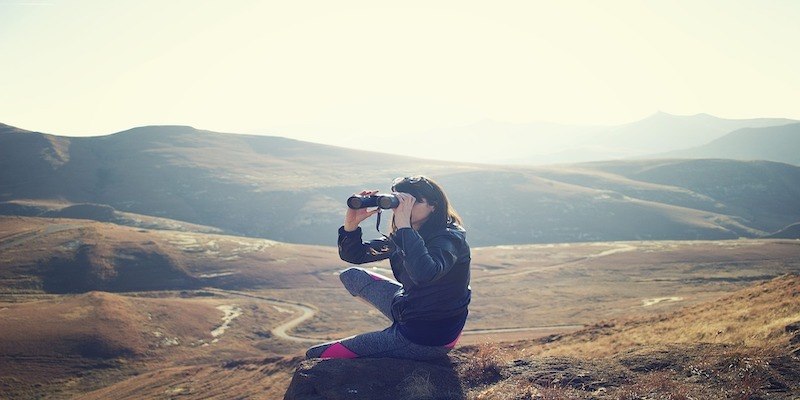
Binoculars are what I commonly use for general surveillance, outdoor sight-seeing or bird and animal watching.
If you are a nature lover and love such exciting activities make sure you carry a pair of high-quality binoculars.
Whether it’s for a bird watching trip or a safari in a wildlife sanctuary make sure the binoculars are with you.
Even if you are a normal tourist, the binoculars will add to your enjoyment of the outdoor sights and scenes.
What makes binoculars so useful is that they have a closer focal point and a wider view. That makes them more suitable than telescopes for sightseeing and even for surveillance.
I would like to mention that binoculars are specially designed for close range observation on land.
You get to see a 3D image which is what you see when you see directly with your eyes.
Since they are less expensive and handy to use than telescopes, you should have any confusion about what to carry with you. A pair of binoculars, of course.
As you would have guessed, telescopes are not really suitable for these kinds of activities.
2. For Photography Purposes:

Image credit:Vincent Lim Show Chen,Flickr
Are you a professional photographer? Do you like to shoot pictures that people would admire?
If so, I have a few tips for you.
For a picture-taking expedition, you are better off with a telescope as more and more telescopes are being manufactured keeping photography use in mind. While there are a few Binoculars brands which customize an adaptor setting for photography purposes.
However, you might be able to get the same performance, or better, with a spotting scope instead of a telescope.
Spotting scopes supplement the area between binoculars and telescopes when it comes to magnification.
In the case of a Smartphone, in addition to your professional smartphone camera, you should have a good pair of binoculars. That will come in very handy to take better quality photos of nature and wildlife.
There are some binoculars brands who provide smartphone adaptors, that allows you to use a smartphone to take pictures.
We watch real objects using both our eyes. Same is the effect when you use binoculars to look at an object. However, in a camera, you view through only one lens.
This makes it difficult to observe natural surrounding and moving objects well. To overcome this difficulty, you should use the binoculars to get a clear 3D view of the surroundings.
After this groundwork, you can go and get your cameras. Right?
3. For Camping Enthusiasts:
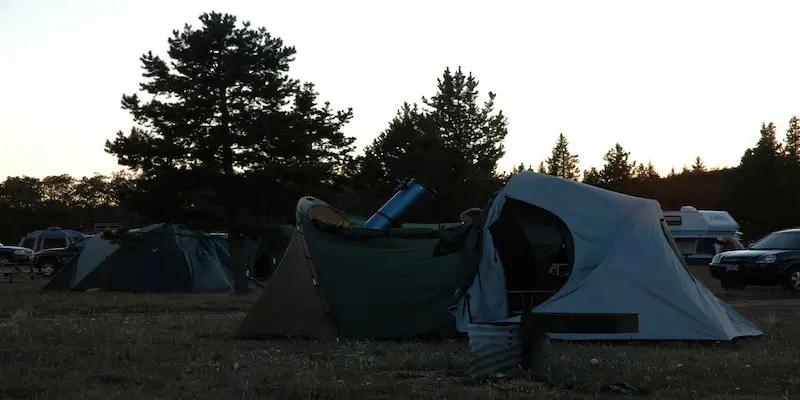
Image credit: Jeff, Flickr
If you set out on a camping trip of one or more days it will good to carry a pair of binoculars as well as a small telescope.
Both of them will come in very handy and help us have a great camping experience.
The binoculars will be useful during day time hikes and explorations to watch and enjoy the birds and other scenic features.
At night, they will help you to engage in stargazing especially if the night is dark and the skies are clear.
There are very effective models of binoculars that are ideal on a camping trip like the Ultra view wide angle binoculars, waterproof compact binoculars, and Giant view astronomy binoculars.
Dark nights at camping sites are very good opportunities to observe the sky and heavenly bodies using a telescope.
You can choose from among a few goods reflecting or refracting telescopes of a reasonable size and carry it in your car.
Carrying the right kind of binoculars and telescope can really make your camping trip memorable.
4. For Astronomical Use :
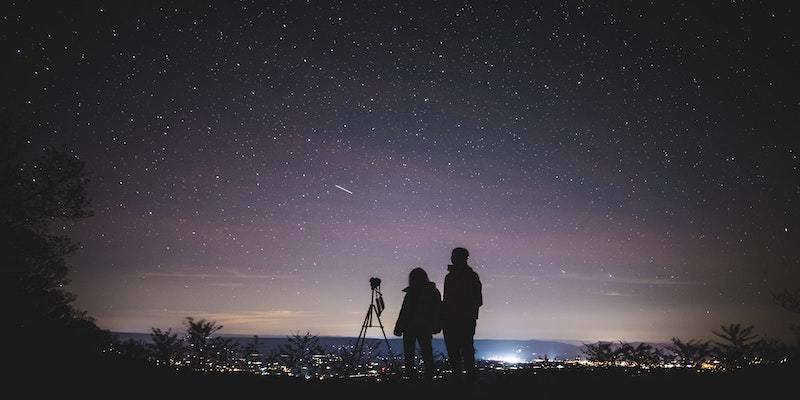
Photo by Yuting Gao from Pexels
If you are a professional or amateur astronomer, you have to rely heavily on telescopes. Binoculars too can play a minor role.
Let me explain. Telescopes give you enlarged images of the faraway heavenly objects. You can see the details.
For example, using a good telescope we can see the craters on the moon and some planets. But there is one drawback.
Since these are quite large and heavy, they need to be fixed to a spot. You cannot carry these around. If you are a hobby astronomer, you may set up your telescope in your backyard or the rooftop!
You can use binoculars also to an extent. Since they have wider lenses, you can observe galaxies or whole constellations in one frame.
Anyway, in astronomy, telescopes are a must and binoculars can be an add on.
5. Hunting and Other activities:
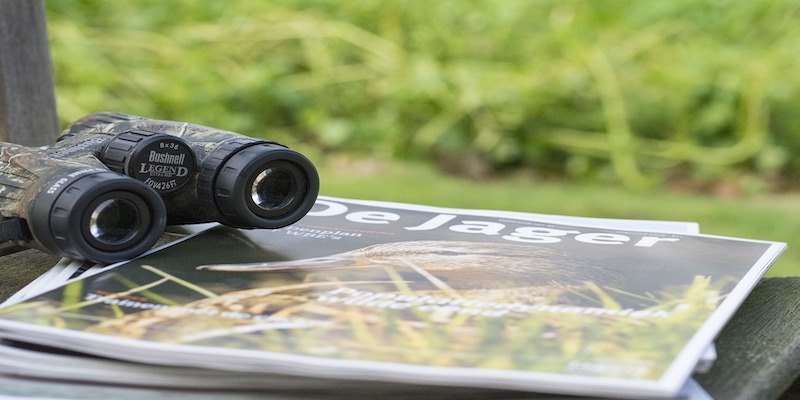
If you are a lover of hunting, let me tell you clearly that using a good pair of binoculars will help you a lot.
You can use them to see game animals that you may miss out with the naked eye.
It’s a good idea to use 8x binoculars with a larger objective lens. This will help you to the game and surrounding areas even in poor light conditions.
You may ask me – Why use binoculars at all? Why not look through the rifle scopes to check on moving animals in a bushy area. In dim light this is difficult.
By viewing through the binoculars you can survey of the whole place from a reasonable distance and get a clear overall picture s the terrain and the animals around.
This will help you to plan your further steps and hunt successfully. You can also modify your approach as you see more details through the binoculars.
As for telescopes, let me tell you that they are of no practical use for hunting at all.
6. Exposure to Rain or Wet conditions:
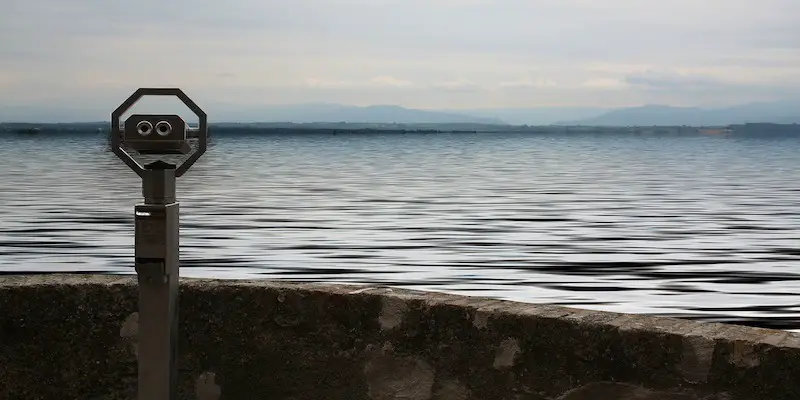
Let me make it clear that telescopes are not really made for use in rain or wet conditions.
In any case, in such conditions what can you observe in the sky? So, forget about using telescopes under such conditions.
With binoculars, it’s a different story. They come in different forms and models.
Some of these are suitable for use in rain or wet conditions.
Let me explain. Binoculars with no rating in terms of being weatherproof should not be used in rain or at sea.
If water or moisture gets inside these, it may cause fogging or condensing on the lens. You can not, of course, see clearly in such a case. It may also get damaged.
But the good news is that there are weather-resistant binoculars that are made to keep out moisture to a great extent.
The binoculars models may be waterproofed or fog-proofed.
They fill the fog -proof binoculars with inert gases such as nitrogen or argon, or a combination of the two.
My final advice is: Go ahead and use the right model of binoculars, with due care, in wet conditions.
Advantages of Binoculars vs Telescopes
- can quickly scan large parts of the night sky
- wide field of view
- portable, easy to handle
- less expensive and hardly any maintenance
- ideal for terrestrial viewing
Disadvantages of Binoculars
- cannot view details of heavenly objects
- less suitable in low light conditions
- cannot attach cameras (unlike in the case of telescopes)
- not very strong or sturdy
Telescopes: Advantages over Binoculars
- detailed viewing of celestial objects possible
- computer-assisted tracking possible
- cameras can be conveniently attached
- suitable for use under low light conditions
Disadvantages of Telescopes
- periodic maintenance and adjustments
- not really suitable for nature or terrestrial viewing
- limited portability, being heavy and bulky
- simplest ones require tripod and mount
- complex ones require an elaborate fixed setting.
Conclusion: Binoculars Vs Telescopes
If you ask in a general way, which of these is better – binoculars or telescopes – I cannot give you a definite answer.
I can only say, both are useful optical instruments with different purposes and applications. However, if you know what your purpose is, it is easy to decide what to use.
For example, if you are an astronomer, you have to rely mainly on telescopes and use binoculars to support this task.
On the other hand, if you are a nature lover, bird watchers or a tourist on an outdoor trip, you will find binoculars the most useful equipment to carry with you.
I would like to stress that both telescopes and binoculars have their advantages and disadvantages.
Once you are clear about your specific needs, you will know whether to use binoculars or the telescopes or a combination of the two to achieve your goals successfully.
Rightly used, both these can be extremely useful.

Excellent information and a very good guide to select what one needs. Thanks
There are two major types of what is the best microscope for cells, and these are digital and fixed. The digital one uses a computer to provide the images and it can be adjusted easily depending on the size of the cells to be viewed.
Curious…for those insufferable “flat-earthers” what if you could take a telescope, or binoculars to a level east or west from a high spot. Would you be able to see another continent like China or Australia for instance?
There is no need to use a telescope to see the curvature of the Earth. You can notice with your own eyes. The telescope will only help you to see distant objects clearly, and widen your horizon. Light always travels in a straight line. It does not bend.
The telescope can collect more light coming from the objects in a small view. You will not be able to see any object beyond the horizon. You can see the curvature of the Earth with your own eyes or with a telescope.
Just look at the horizon as far as you can see where you see the sky appears to be touching the surface of the Earth. Now turn around 360 degrees looking at the horizon, then imagine (draw) at the horizon that circular line.
Look the sky above your head. You feel like looking a segment of the sphere. This is the way you see the curvature of the Earth with your own eyes and without the telescope.
If the Earth is flat, you can see most distant objects on the Earth with your telescope. But you are not as the Earth is not flat.
Yes, you could see the ships or other distant structures being hidden by the curvature of the Earth.
A telescope would help you realize that it isn’t just an optical illusion as the flat earthers claim. When you zoom in, you cannot see the entire ship or structure again, as they say.
No matter how much you zoom in, the object will still appear “cut” because of the curvature.